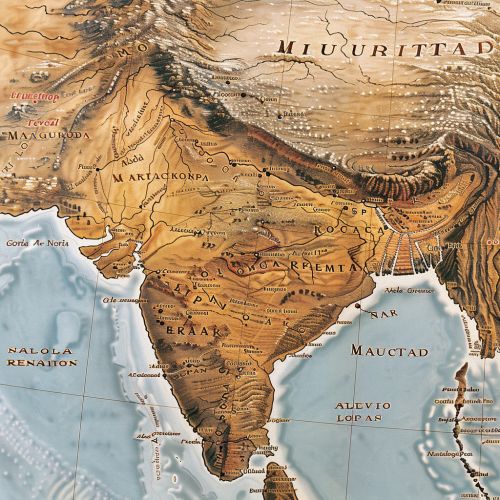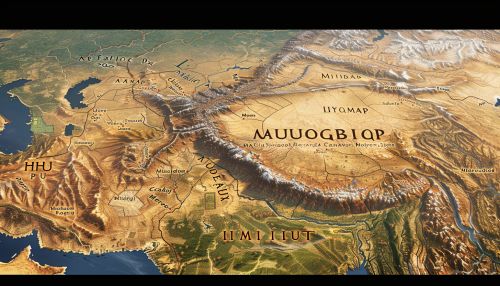Maurya Empire
Introduction
The Maurya Empire was a geographically extensive and powerful political and military empire in ancient India, founded by Chandragupta Maurya in 322 BCE. The empire, which lasted until 185 BCE, was one of the largest and most influential empires in the Indian subcontinent's history. It played a crucial role in shaping the cultural, political, and economic landscape of ancient India.
Origins and Founding
The origins of the Maurya Empire can be traced back to the Magadha region, which was a prominent kingdom in ancient India. Chandragupta Maurya, with the guidance and support of his mentor and advisor Kautilya, overthrew the Nanda Dynasty and established the Maurya Empire. The strategic and administrative acumen of Kautilya, as documented in his treatise Arthashastra, was instrumental in the establishment and expansion of the empire.
Expansion and Consolidation
Under Chandragupta's rule, the Maurya Empire expanded rapidly. He successfully unified most of the Indian subcontinent, including present-day India, Pakistan, and parts of Afghanistan. The empire's expansion continued under his successors, particularly his son Bindusara and grandson Ashoka. Bindusara extended the empire further south, while Ashoka's reign marked the zenith of the Maurya Empire's territorial reach.
Administration and Governance
The Maurya Empire was known for its highly organized and efficient administrative system. The central government was headed by the emperor, who was supported by a council of ministers. The empire was divided into provinces, each governed by a viceroy appointed by the emperor. The provinces were further subdivided into districts and villages, with local officials overseeing the administration.
The Arthashastra provides detailed insights into the administrative machinery of the Maurya Empire, including taxation, law and order, espionage, and economic policies. The empire's bureaucracy was extensive, with various departments handling different aspects of governance, such as agriculture, trade, and public works.
Economy and Trade
The Maurya Empire had a thriving economy, driven by agriculture, trade, and industry. The fertile plains of the Ganges and Indus rivers supported extensive agricultural activities, producing surplus crops that fueled trade and commerce. The empire's strategic location facilitated trade with neighboring regions, including Central Asia, the Middle East, and Southeast Asia.
The Maurya Empire had a well-developed network of roads and ports, which facilitated the movement of goods and people. The Grand Trunk Road, one of the oldest and longest roads in Asia, was constructed during this period, connecting the eastern and western parts of the empire. The empire also had a standardized system of weights and measures, which promoted trade and commerce.
Military Organization
The Maurya Empire had a formidable military, which played a crucial role in its expansion and consolidation. The army was composed of infantry, cavalry, chariots, and elephants, with each unit having specialized roles and responsibilities. The empire also maintained a navy to protect its coastal regions and trade routes.
The military was supported by a sophisticated intelligence network, which gathered information on enemy movements and internal threats. The Arthashastra outlines various military strategies and tactics employed by the Maurya rulers, including the use of spies, psychological warfare, and diplomatic alliances.
Ashoka's Reign and the Spread of Buddhism
The reign of Ashoka (268-232 BCE) is considered a golden period in the history of the Maurya Empire. Ashoka's early reign was marked by military conquests, culminating in the Kalinga War. The brutality and bloodshed of the Kalinga War had a profound impact on Ashoka, leading to his conversion to Buddhism.
Ashoka's embrace of Buddhism had far-reaching consequences for the Maurya Empire and the Indian subcontinent. He promoted the spread of Buddhism through the construction of stupas, viharas, and pillars, inscribed with his edicts. Ashoka's efforts to propagate Buddhism extended beyond the borders of the empire, reaching as far as Sri Lanka, Central Asia, and Southeast Asia.
Decline and Fall
The decline of the Maurya Empire began after the death of Ashoka. The subsequent rulers were unable to maintain the vast empire, and internal strife and external invasions weakened the central authority. The last Maurya ruler, Brihadratha, was assassinated in 185 BCE by his general Pushyamitra Shunga, who founded the Shunga Dynasty.
The fall of the Maurya Empire marked the end of a significant era in Indian history. However, the administrative and cultural achievements of the Maurya period continued to influence subsequent Indian empires and kingdoms.
Cultural and Scientific Contributions
The Maurya Empire made significant contributions to Indian culture, science, and technology. The period saw advancements in architecture, art, literature, and medicine. The construction of stupas and pillars, adorned with intricate carvings and inscriptions, is a testament to the architectural prowess of the Maurya period.
The Sanskrit language and Prakrit dialects flourished during this period, with numerous literary works being produced. The Arthashastra and Ashoka's Edicts are notable examples of the literary and philosophical achievements of the Maurya period.
In the field of medicine, the Maurya period saw the development of Ayurveda, an ancient system of medicine that continues to be practiced in India today. The Sushruta Samhita, a seminal text on surgery and medicine, is believed to have been composed during this period.
Legacy
The Maurya Empire's legacy is evident in various aspects of Indian history and culture. The administrative and governance systems established by the Mauryas served as a model for subsequent Indian empires. The spread of Buddhism during Ashoka's reign had a profound impact on the religious and cultural landscape of Asia.
The Maurya Empire's contributions to art, architecture, and literature continue to be celebrated and studied. The stupas and pillars constructed during this period are important heritage sites, attracting scholars and tourists from around the world.
See Also


